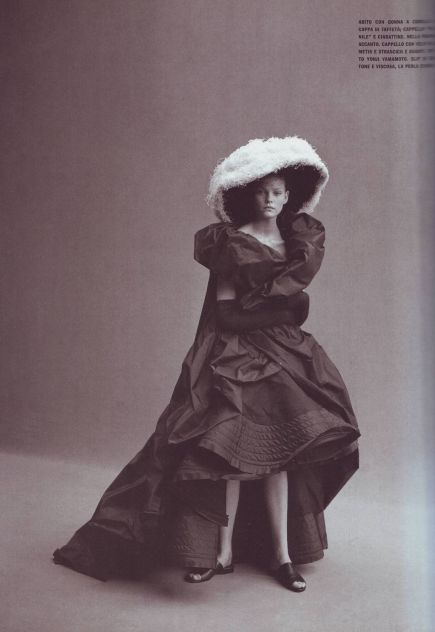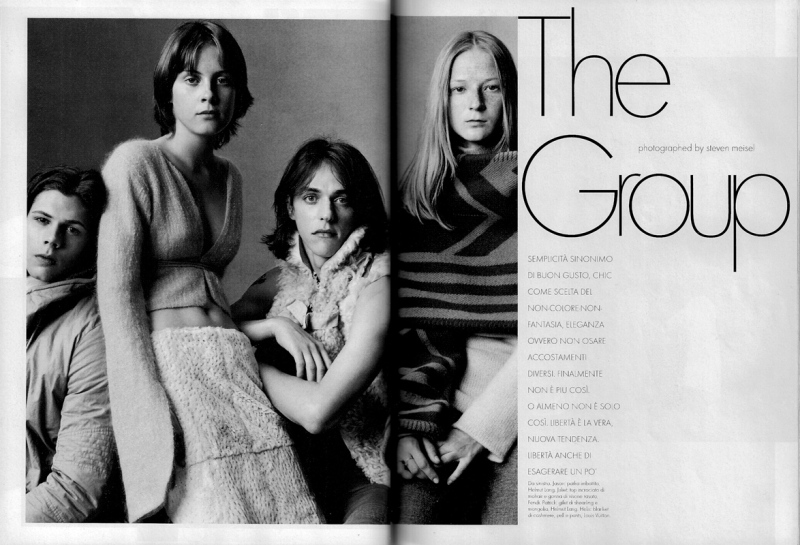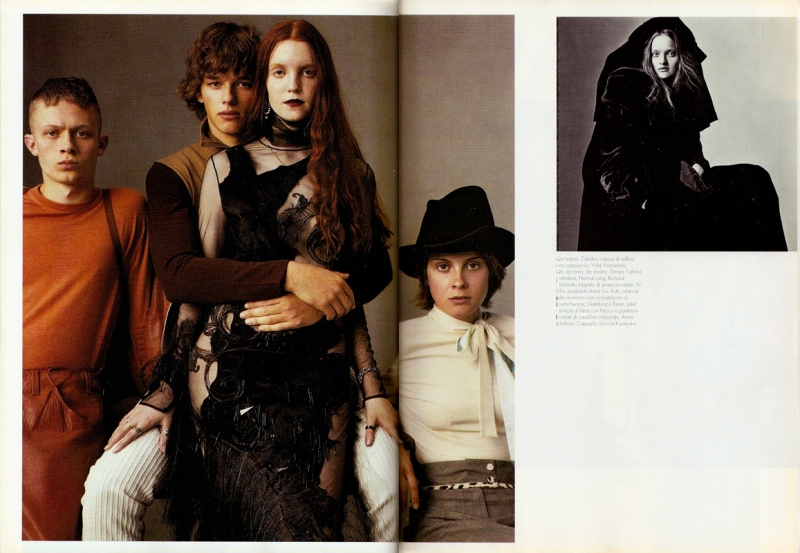Stunning late 90s editorial from Vogue Italia’s couture supplement, shot by Steven Meisel and styled by Nicoletta Santoro. Looking at these photos I think again about appearance and power – how we could add power to our image through body language, glance, clothes, make-up and accessories and how often we use our wardrobe/style in order to look more powerful than we are.
Tag Archives: vogue italia
Portraits of style
I continue to observe and admire 90s fashion editorials such as this one from Vogue Italia shot by Peter Lindbergh and styled by Nicoletta Santoro. I like that it’s so minimalist – nothing distracts you from the beauty of the clothes and models. It features looks from Yohji Yamamoto (that famous spring/summer’99 collection), Helmut Lang, Comme des Garçons, and many others.
Theatre of fashion
military is ‘in’ again) – ‘Theatre of fashion’ shot by Steven Meisel and styled by Brana Wolf, Vogue Italia October 1998
The Group
The Group – shot by Steven Meisel for Vogue Italia, July 1999
Now working closely with professional retouchers I realize just how much photoshop-polishing goes into production of every image we see. I mean of course I knew it before but to know and to see with your own eyes is a different thing. Knowing to what extent images are edited there is no wonder that in the magazines now everybody is slim and sexy, with glowing skin, pretty faces and shiny hair. All beautiful and all boring. For me it feels like there is something wrong with the way what models are now being picked for the shoots and how they are being depicted in the editorials. It’s not a matter of size or prevailing of the exact type of beauty – anorexic or plus-size, eastern european or asian, there’s something missing from all these girls and boys.
Despite of the the triumph of prettiness it has nothing to do with over the top glamour of the mid 00s which had in itself a sort of joie de vivre quality. What I’m talking about is just depersonalisation of some kind. When all the little things that make one unique are wiped out in order to create an ideal face/body. Thinking of it I could probably link it to, for example, ancient Greek’s sculptures. There were very strict rules according to which every statue had to be made. The ancient Greek’s pantheon consisted of ideal beings – ageless and flawless, with perfect bodies and faces. Often you couldn’t tell apart one god or goddess from another judging only by their looks unless there are their ‘key accessories’ like Heracle’s lion pelt, Athena’s helmet or Hermes’s sandals. Ancient sculptors used real people as their models and turned them into gods because of the demands of their religion. Today photographers and retouchers turn models into otherworldly ideal creatures because of the demands of fashion. Also adds to the similarity recent popularity of the androgynous look which is also a quite familiar concept for the ancient Greek’s culture.
All in all I find such images to be quite dull, they fail to make an impression on me and even in those ‘provocative’ editorials there are all these languid poses and blank expressions. Speaking about the faces. Maybe that’s the point – ‘standard’ faces don’t distract from the clothes which is good for advertising.
Blame it on magazines, casting agencies, advertisers or ourselves (because maybe we want fashion to be projection of our dreams, not the reflection of reality) but I feel the lack of ‘realness’ in modern editorials.
Truth be told all I wanted to say is how refreshing for me was to see this photos made more than ten years ago by Steven Meisel for Vogue Italia. Amazing colour palette and texture combinations – styling was done by Brana Wolf, and notice the furniture used, it’s also a perfect match for this ed. And what a faces – I can’t stop watching them. I certainly miss photoshoots like this – in fashion there should be a place for imperfect, diverse, real and random)












